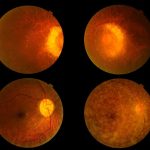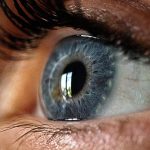It’s been a back-to-school season like no other! And whether your student is learning in a classroom or you’re overseeing their virtual learning program from home, vision is critical to how kids learn in a multitude of ways.
The first way vision is critical to learning is obvious: If your student has poor visual acuity—as measured in terms of 20/20 vision—they may be unable to see the whiteboard, chalkboard, tablet or computer screen where the teaching is taking place. If a child is nearsighted or farsighted, that can present a problem for them in their current learning setting.
But good vision—the kind that empowers your child to reach their full potential—is more than just visual clarity and 20/20 eyesight. Excellent vision also means that your child has strong functional vision.
Functional vision is how your entire visual system—eyes, brain and the visual pathways between them—work together to help you move through and interact with your surroundings.
Functional vision means that your student has good eye teaming, eye focusing and coordinated eye movement. This enables the eyes to work together as a team with the brain to provide accurate, instant information that’s critical to the learning process.
Sometimes kids who have never experienced problems in any setting in life will encounter academic struggles during the first month of a new school year. That can be a symptom of a functional vision problem, and indicates that it’s past time for a visit to your optometrist for a comprehensive eye exam.
Following are 27 signs, symptoms or behaviors that could mean your student is experiencing a functional vision problem:
Physical Signs of Functional Vision Problems
- A lazy eye or crossed eyes
- Excessive blinking, squinting or if your child often closes one eye
- If your child tilts his or her head to one side
- Holding a device or tablet too close, or practically having their nose in the book
- Exhibits poor hand-eye coordination or motor skills
- Is clumsy or accident-prone; often bumping into objects or dropping things
- If your child has trouble throwing or catching objects
- An obvious preference for using one eye, favoring that eye
- If the eyes are red, itchy or your child rubs them or says they’re burning
- Headaches in the temples or forehead
Behavioral Signs of Functional Vision Problems
- A brief or short attention span
- If your child gets irritated, nervous or tires quickly when reading or performing “close work”
- Shows signs of developmental or emotional immaturity
- Easily frustrated and doesn’t get along easily with other students
- Says he or she experiences blurred vision
- Dizziness, nausea or motion sickness
- Mentions that she or he has double vision
Working Signs of Functional Vision Problems
- Often confuses their right or left when giving or taking directions
- Tilts or twists their head when looking at a book or screen, to favor that eye
- Holds a book or object very close to their face
- When reading or copying work, frequently loses their place in the activity
- Low reading comprehension; can’t remember what they’ve read
- Frequently mixes up or reverses words or letters in words – such as “b” and “d”
- Uses their finger as a guide when reading lines of text
- Often skips words, omits small words or has to re-read a line of text
- Moves their head across the page, back and forth, instead of moving the eyes
- Struggles with their handwriting skills
To succeed in school and in life, your children and loved ones need to be able to use the full spectrum of their visual system to maximize the ability to learn and experience life. That’s why having a robust functional vision system is critical.
If your child or loved one is experiencing any of these 27 telltale symptoms, make an appointment with your optometrist for a comprehensive visual exam. We will test your student for the eye teaming, focusing and coordinated eye movement skills necessary to learn at their highest level. Functional vision issues are highly treatable, especially when they’re caught early.






